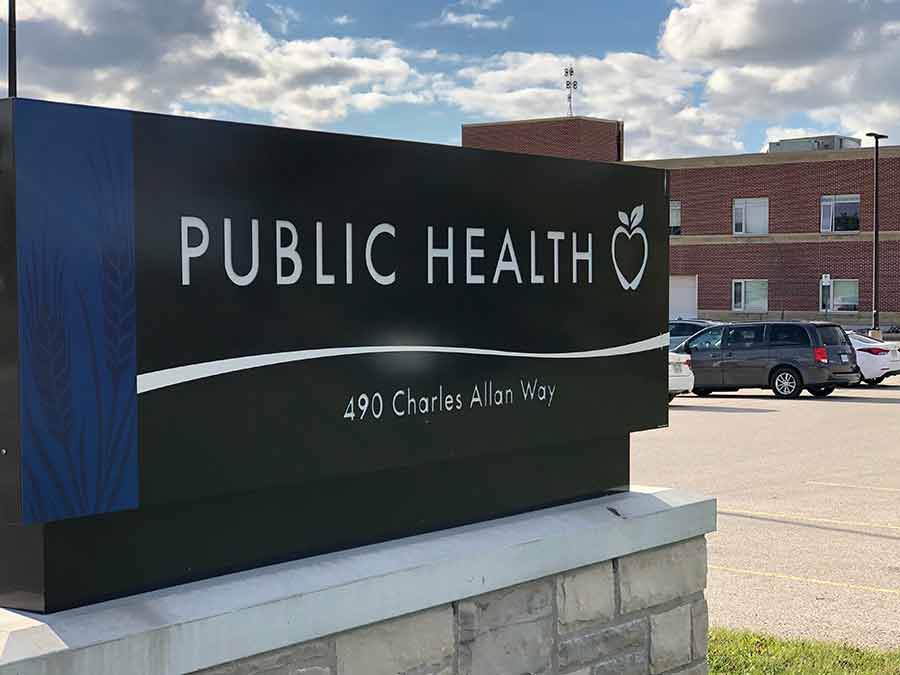GUELPH – Talking to your kids about drugs can be difficult, Dr. Matthew Tenenbaum acknowledged during a virtual session for parents on May 15.
But it’s important to open the door to these conversations, and children become aware of drugs far earlier than most parents realize.
“By age 10 or 11, they have already heard about [drugs] and are developing a sense of what’s normal,” said Tenenbaum, associate medical officer of health for Wellington-Dufferin-Guelph Public Health (WDGPH).
“Kids are thinking about these things, even if you’re not talking about it.”
The Wednesday evening session was the second in a series of seminars the health unit will deliver over the coming months in an effort to help parents raise important and sometimes uncomfortable subjects with their kids.
The first was on vaping; this one was about cannabis and other drugs.
Cannabis can come in many forms; the most common are a joint, which is smoked, vaping, which is inhaled, and edibles, which are eaten.
The concern with youth taking these drugs is first, it’s illegal for anyone under age 19 to possess or use them, and second, the effects can be damaging to their still-developing brains.
“In the short term, it can affect focus, coordination, judgment and it’s harder to pay attention,” Tenenbaum said, adding it can also affect memory and mood, like anxiety or feelings of paranoia.
“In the long term, you risk addiction or dependence and that can impact your ability to function.”
It’s the THC in cannabis that causes that “feel good” feeling, he said.
But for youth with regular exposure, it can lead to conditions like anxiety and paranoia that can then become life-long issues. Youth under 16 are at higher risk of these impacts.

DR. MATTHEW TENENBAUM
But along with cannabis use often comes other risky activities like drinking alcohol or smoking cigarettes.
Results from the 2022 Well-Bieing and Health Youth (WHY) Survey indicate one in four youth aged 16 to 24 always or often use cannabis with alcohol. And one in four also smoke cigarettes when using cannabis.
Edibles take longer to get into the bloodstream than smoking a joint, so it’s easy to eat too much and not realize it for hours.
When these finally kick in, they can kick in hard.
Edibles also look a lot like candy. Make sure gummies are well out of reach of young children, Tenenbaum advised.
Cannabis was legalized in Canada in 2018 and that makes it easier for youth to get their hands on it. But it’s also important to keep an eye on prescription drugs in the home.
Tenenbaum said people tend to think of opioids as heroin and fentanyl, which is correct, but Tylenol 3 and Percocet are also opioids.
Consider whether there’s an expired prescription in your bathroom cupboard. Even cough and cold medicine can contain ingredients that if taken in high enough doses, can give that “high.”
Tenenbaum said some youths are drinking cold medicine mixed with pop to get a hallucination feeling.
“It’s the dose that makes it toxic,” he said.
Young people use drugs for the same reasons adults do – to cope with stress or mental health issues or to fit in with their peers.
“Many youths think it’s okay to use drugs because their parents do,” he said.
The point of talking to youth about drugs is not to punish or threaten but to listen, Tenenbaum said.
Youth want to be heard without judgment. And they want trustworthy, unbiased information.
So learn more, reflect on your own biases and what it is you are really worried about as a parent, he suggested.
“Find a time and place where you are both comfortable and listen. Be supportive in your responses. Think about what your young person is saying. And reassure them your concern is about their well-being,” Tenenbaum said.
And if you are worried your child has a drug problem, talk to your family doctor or other agencies that deal with addiction issues.
“There are resources. You don’t have to do this alone,” he said.




